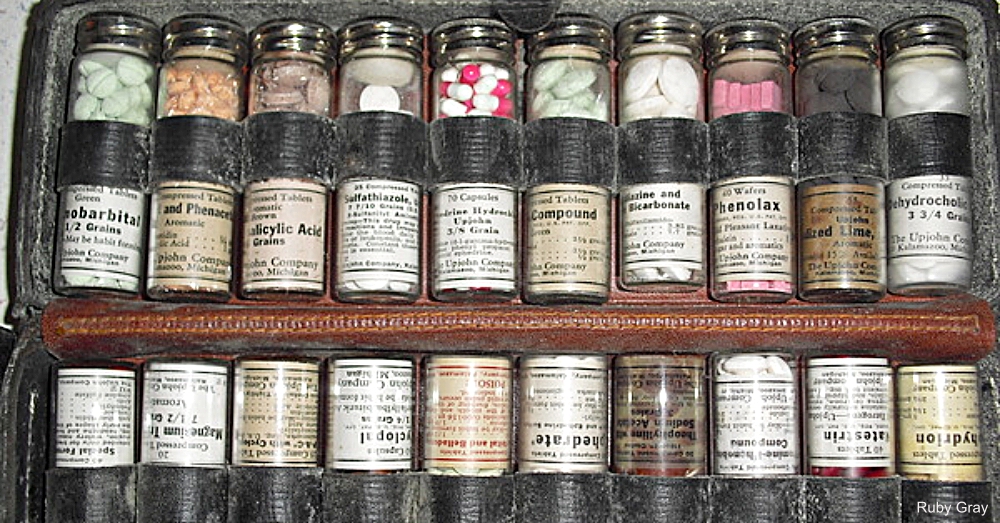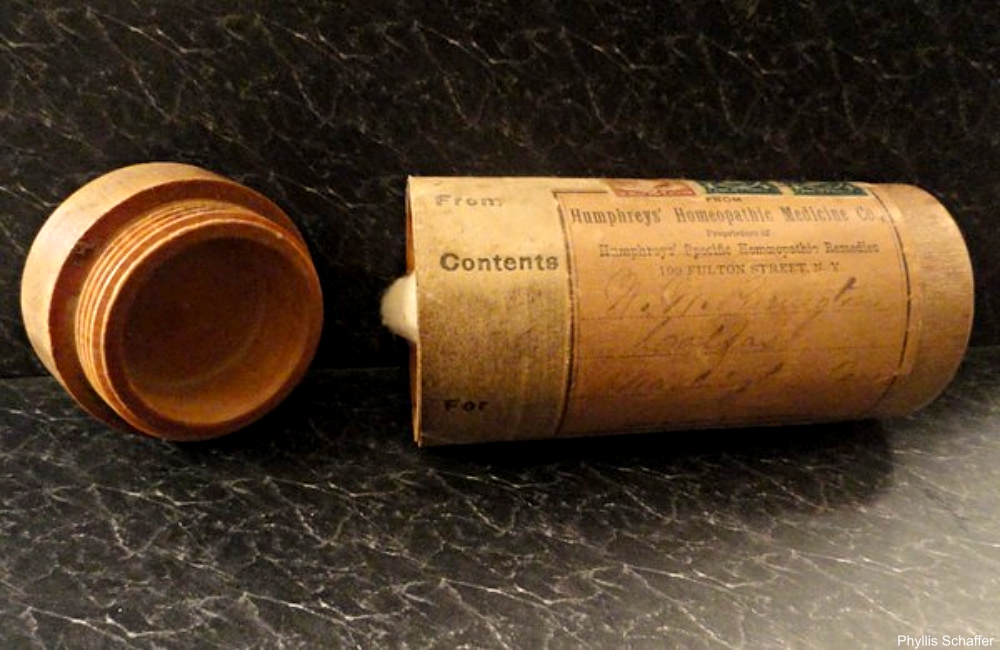Antique Spotlight: Apothecary and Pharmacy Collectibles
While we have come light years in our health care in the past few centuries, we’ve also lost the elegant trappings of the old-fashioned way of providing for customers. Today apothecary and pharmacy items are collectible for many reasons., including their storied history and beautiful appearance.
The apothecary was known as a place to obtain herbs and remedies of all kinds. Drawing on long traditions of using folklore and plant-based remedies, the apothecary started as a place to buy wine and herbs. What a long way we’ve come from crude medicine to modern pharmacies. Some of the products, tools, and advertisements we wouldn’t even recognize today!

Image submitted by Ruby Gray
Before we had a product for every possible illness, the medicines we did have were precious, and most people could not afford to see a proper doctor. Neither the chemist nor the customer understood the causes of illnesses. Attractive labels, bottles, and advertising were key to get people to spend their meager earnings on these unproven mixtures.
Particularly popular were tonics, as they were easy to take and proffered a cure for many ailments all in one go. The bottles they came in ranged from plain to very ornate. Even relatively newer drugstore products have huge appeal for collectors today, such as mid-century cosmetics and beauty aids.

Druggists used many tools which included the mortar and pestle, pill molds and cutters, leech jars, ceramic jars, glass bottles, glass lab equipment, crocks, and scales to name but a portion of them. The earlier tools were less refined but, as manufacturers like Wedgewood and Spode began to create beautiful objects, the aesthetics of the practice became more refined. As standards and competition increased, pharmacies were looking for any way to draw the customers in, like soda fountains and film developing. And boy did they have the chemicals to do so.

Early chemists were far less concerned with branding than modern pharmacists. They were a skilled few and had no ability to mass produce or even standardize their potions. They sold poisonous medicines and straight-out poisons as well. It was the combination of mass-manufactured glass products and increases made to health and safety laws that led pharmacists to create products that were safer, more attractive, and made with standards regarding potency and size. Some pharmacists performed treatments or procedures in their shop, much as a doctor would, before health care practice laws were enacted.

Today apothecary and pharmacy items are collectible for many reasons. The obvious kitsch factor of wild health claims, the now-illegal substances sold over-the-counter, and elegant objects for ordinary creams are a few of the draws (as you well know if you collect). Some of the more ornate Delft canisters and rare bottles can sell for hundreds, but often apothecary items are very affordable at under $50.

While we have advanced light years with health care in the past few centuries, we’ve also lost the elegant trappings of the old-fashioned way of providing for customers. Displays of porcelain containers and tall glass jars, brass-edged boxes, and odd instruments once filled these centers of do-it-yourself healthcare. We love the old look of all the bottles, the tools, and the advertisements.
» Love glass bottles? Take a look at these gorgeous vintage and antique perfume bottles!»
SKM: below-content placeholderWhizzco for DOT

